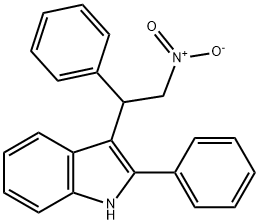Description
GAT211, aslo known as AZ-4, is a small molecule CB1 positive allosteric modulator. GAT211 suppresses allodynia and produces synergistic antiallodynic effects with fatty acid amide hydrolase and monoacylglycerol lipase inhibitors in paclitaxel-treated mice. Positive allosteric modulation of CB1-receptor signaling with GAT211shows promise as a safe and effective analgesic strategy that lacks tolerance, dependence, and abuse liability.
Uses
GAT211 is a cannabinoid 1 receptor (CB1R) positive allosteric modulator (PAM). GAT211 activates cAMP and β-arrestin2 with EC50 values of 260 nM and 650 nM, respectively. GAT211 inhibits GAT211 can be used for neuropathic and/or inflammatory pain research[1].
in vivo
GAT211 potentiates the inhibition of electrically evoked vas deferens contraction in the same system (EC50=11 nM, Emax=70)[2].
GAT211 (0.3 mg/kg, 1 mg/kg, 3 mg/kg; 5 mL/kg; ip; 2 doses with 5 min interval) dose-dependently reduced locomotor activity and the acoustic startle response.GAT211 is dissolved in a vehicle of ethanol, kolliphor, and saline at a ratio of 1:1:6 and injected at a volume of 5 mL/kg[3].
References
[1] Garai S, et al. Design, synthesis, and pharmacological profiling of cannabinoid 1 receptor allosteric modulators: Preclinical efficacy of C2-group GAT211 congeners for reducing intraocular pressure. Bioorg Med Chem. 2021 Nov 15;50:116421. DOI:
10.1016/j.bmc.2021.116421[2] McElroy DL, et al. Antipsychotic potential of the type 1 cannabinoid receptor positive allosteric modulator GAT211: preclinical in vitro and in vivo studies. Psychopharmacology (Berl). DOI:
10.1007/s00213-020-05755-x[3] Richard A Slivicki, et al. Positive Allosteric Modulation of Cannabinoid Receptor Type 1 Suppresses Pathological Pain Without Producing Tolerance or Dependence. Biol Psychiatry. 2018 Nov 15;84(10):722-733. DOI:
10.1016/j.biopsych.2017.06.032

